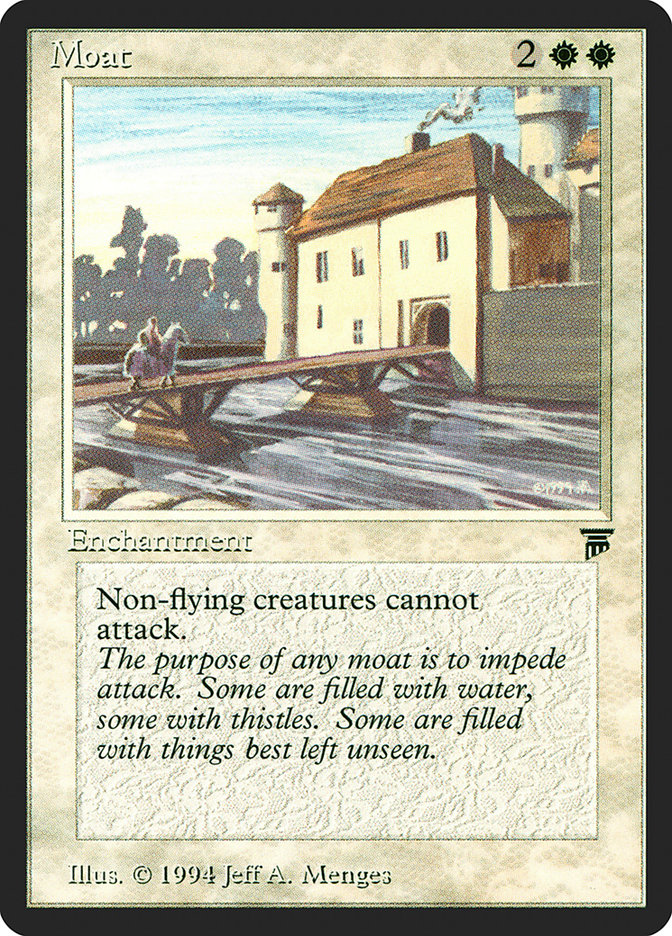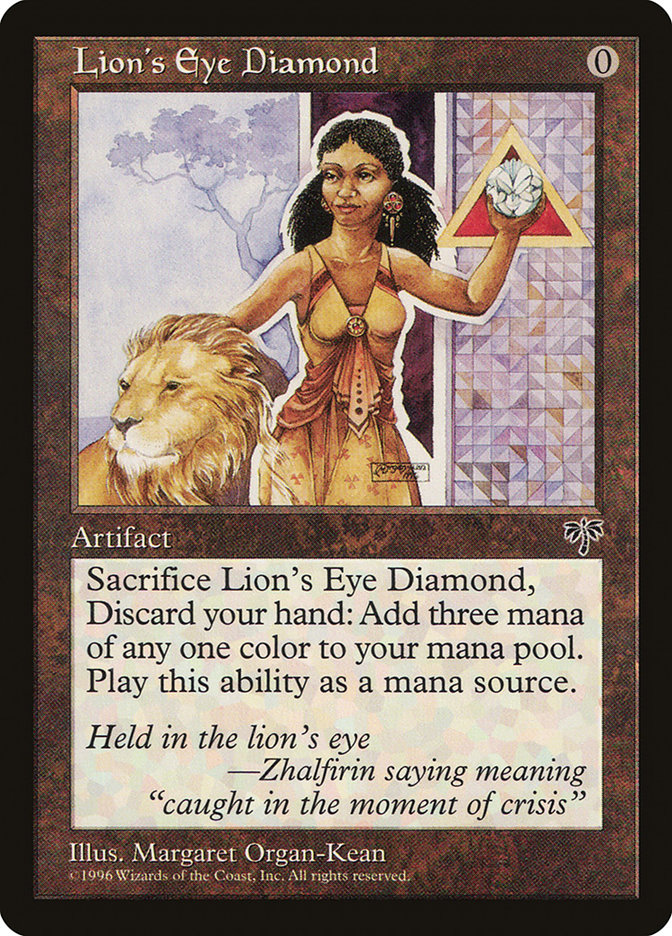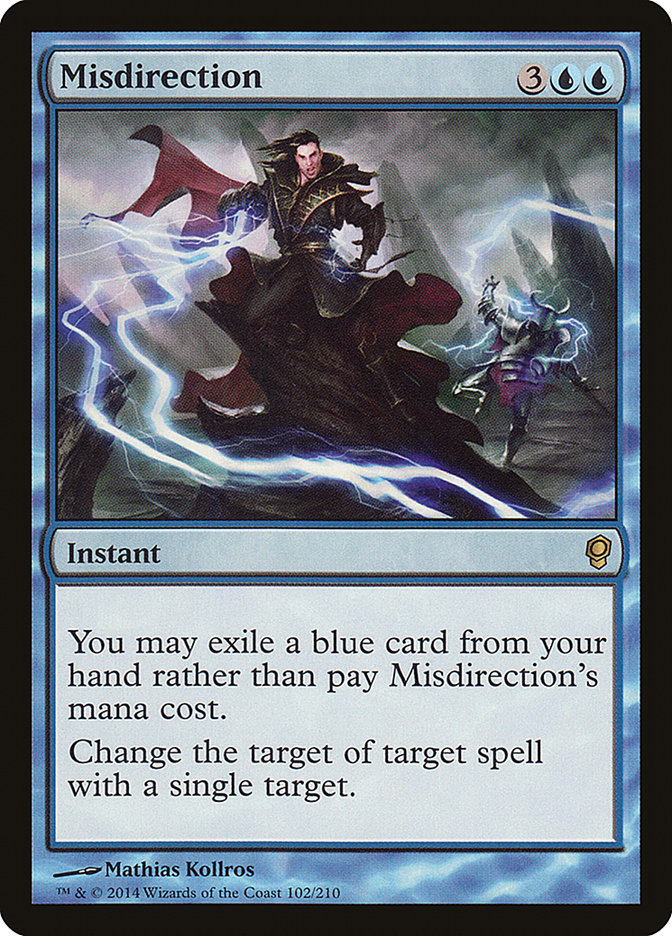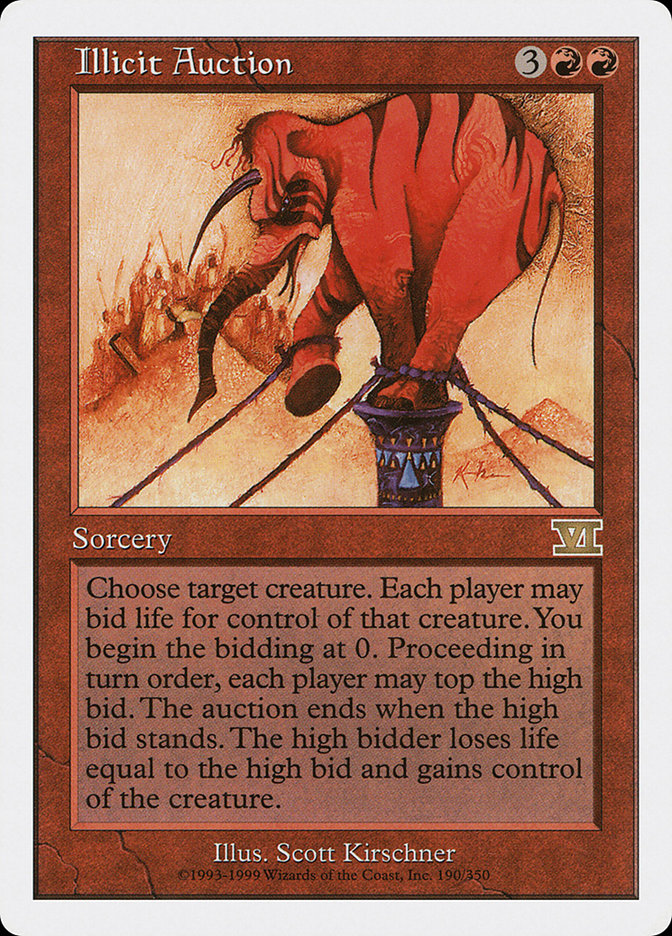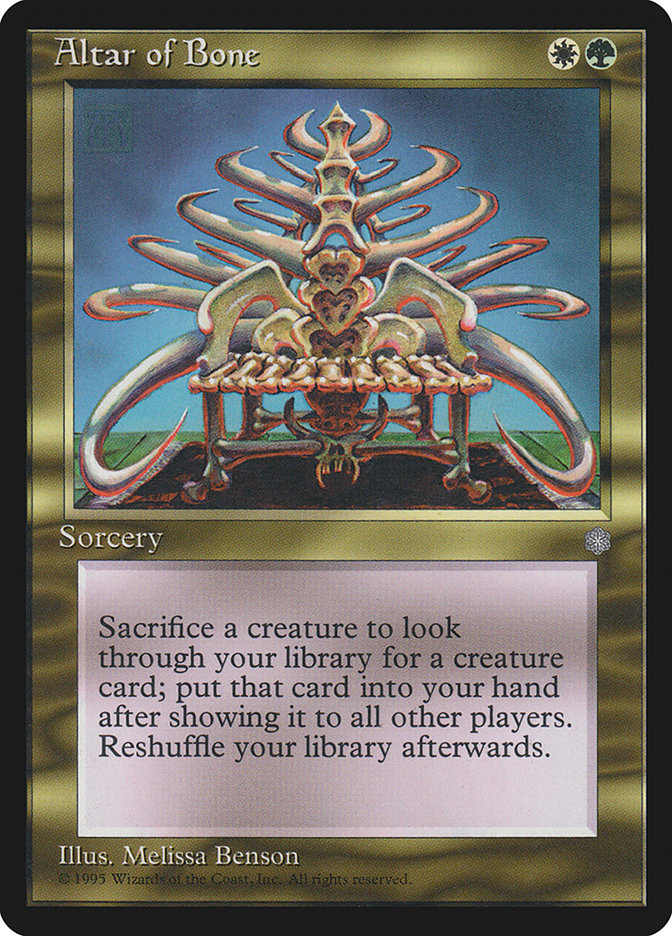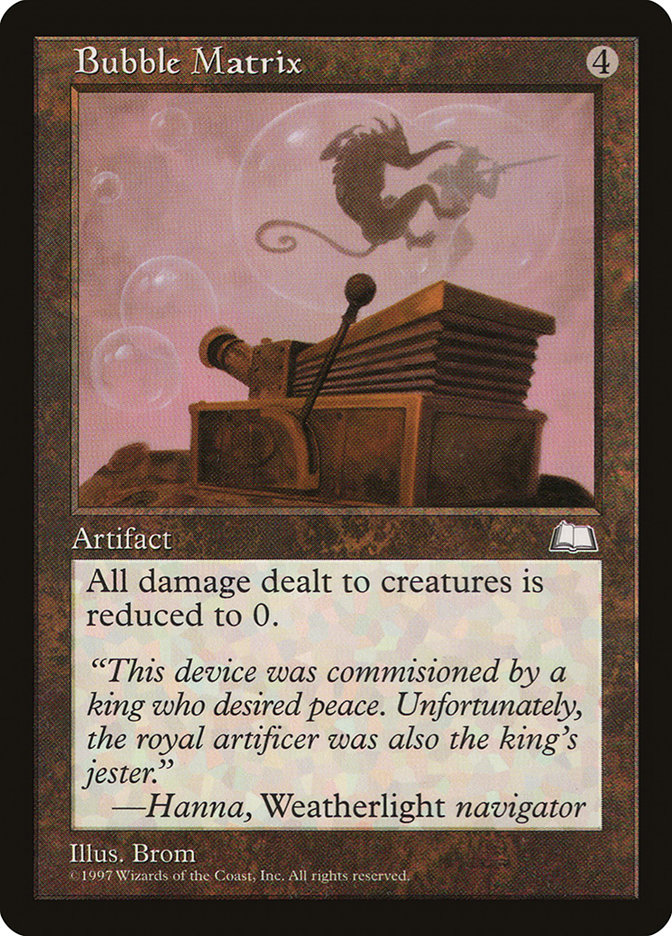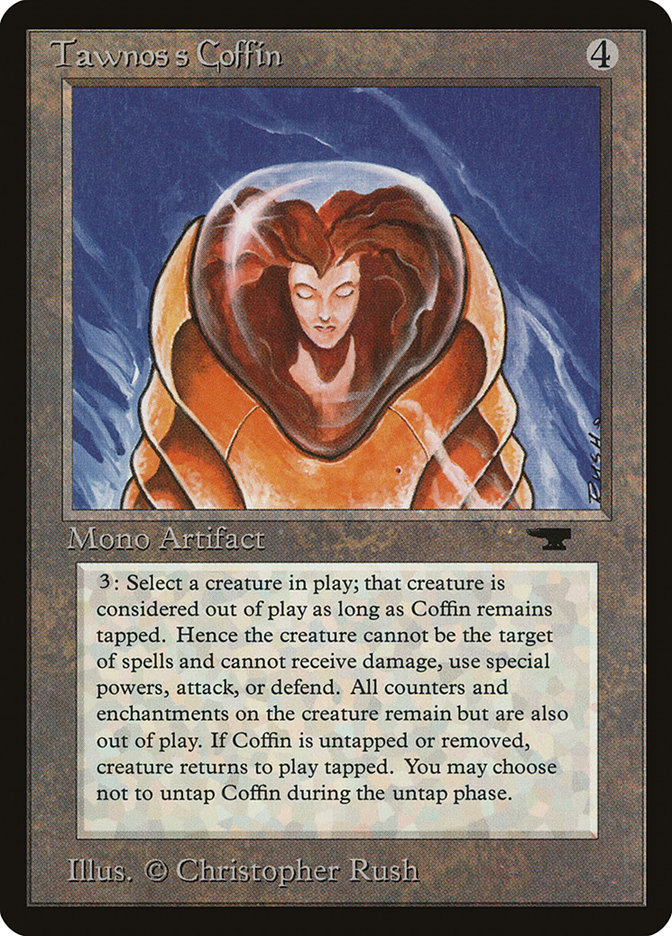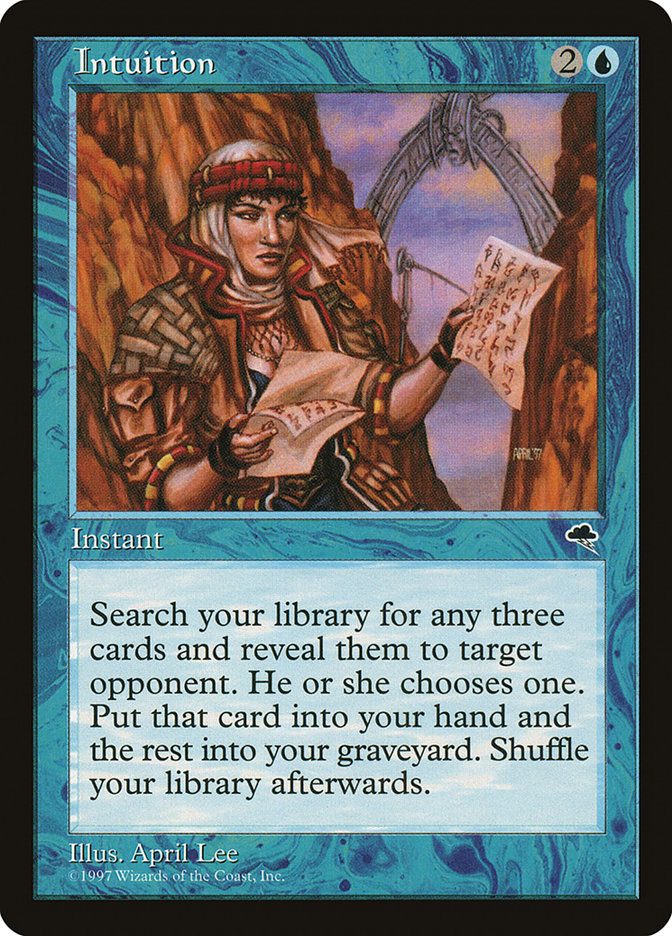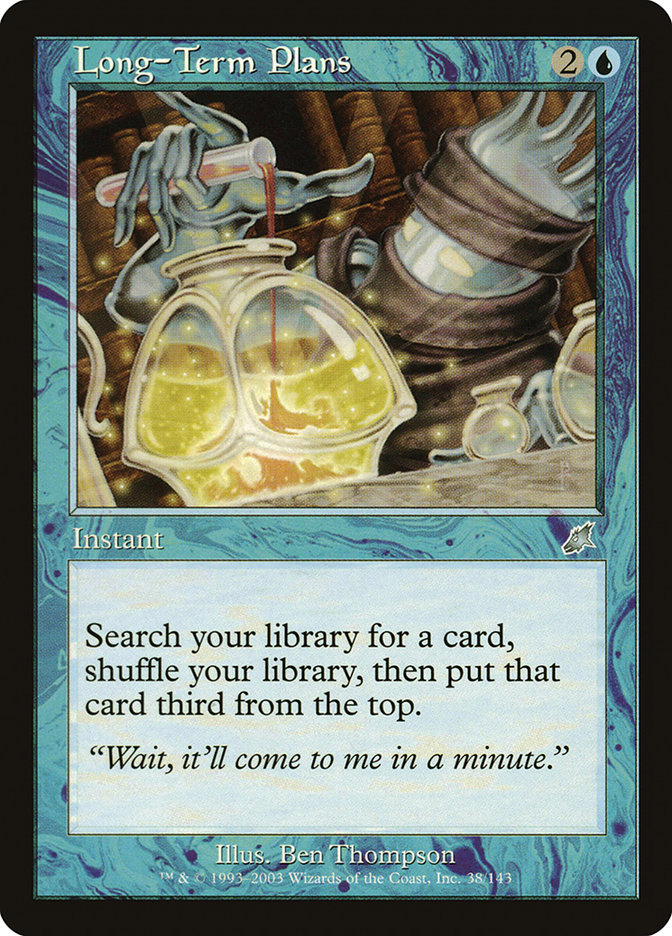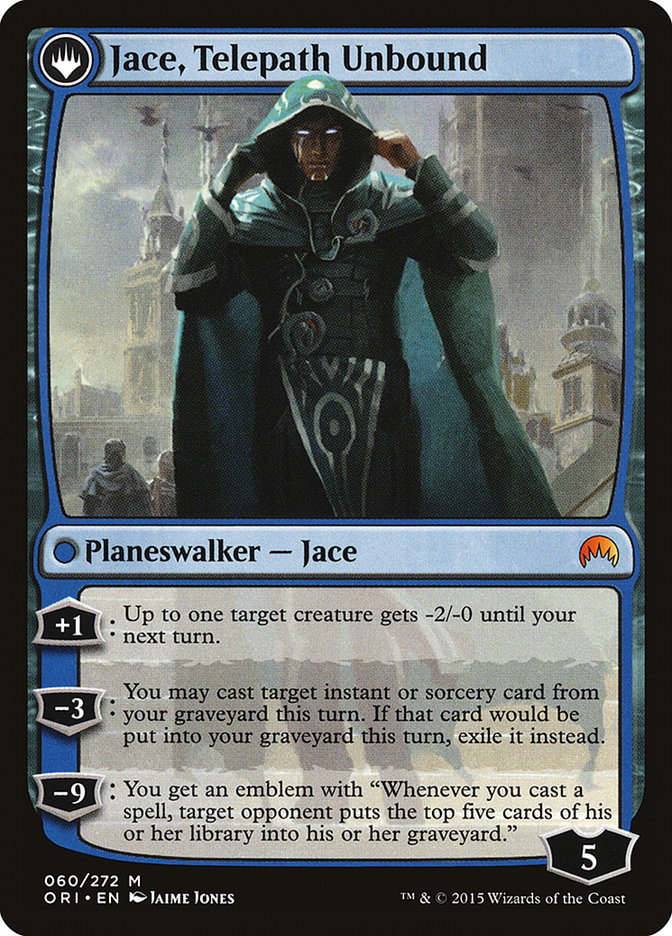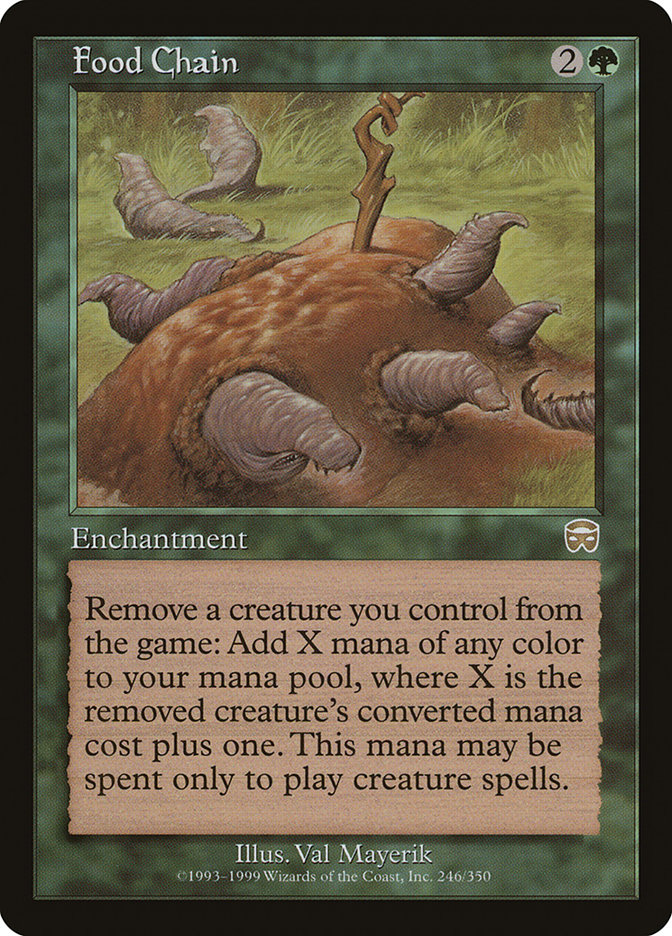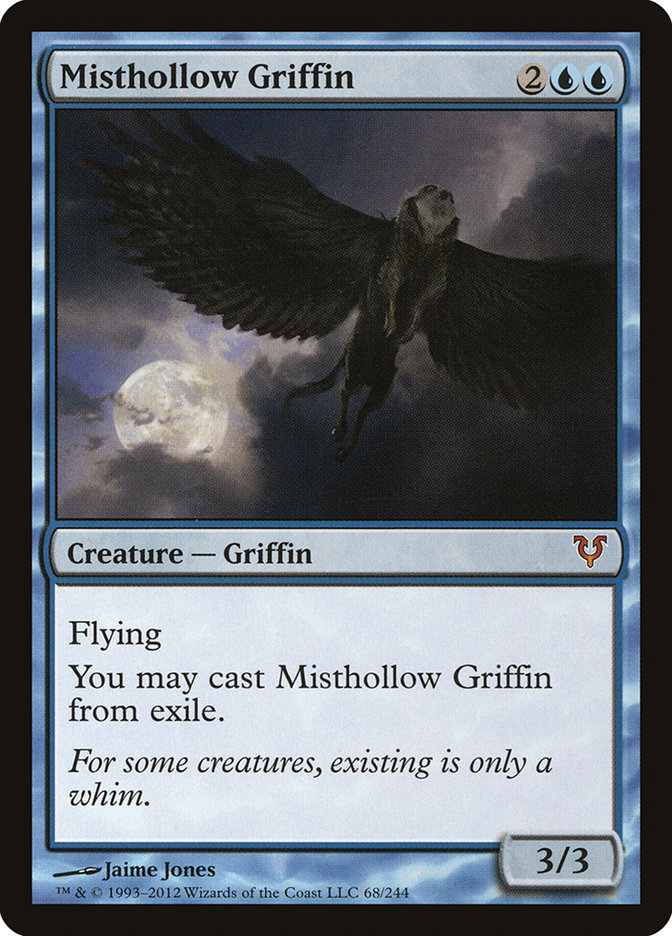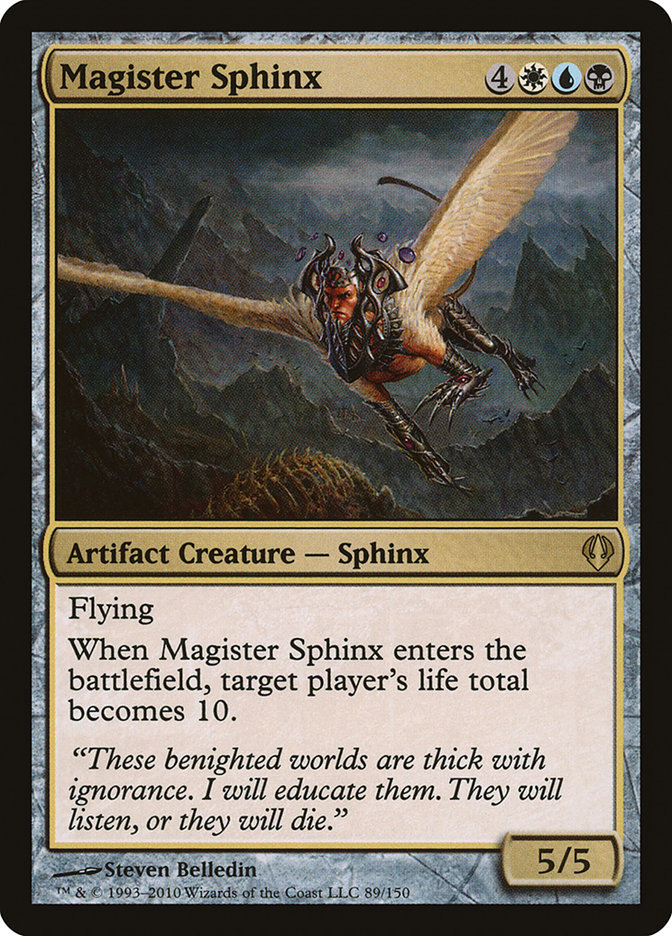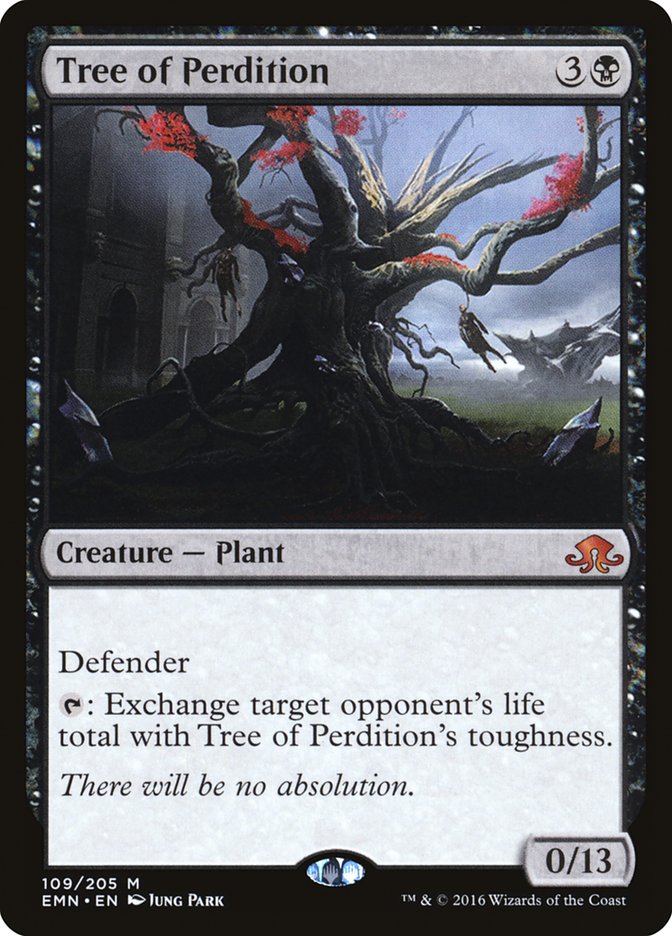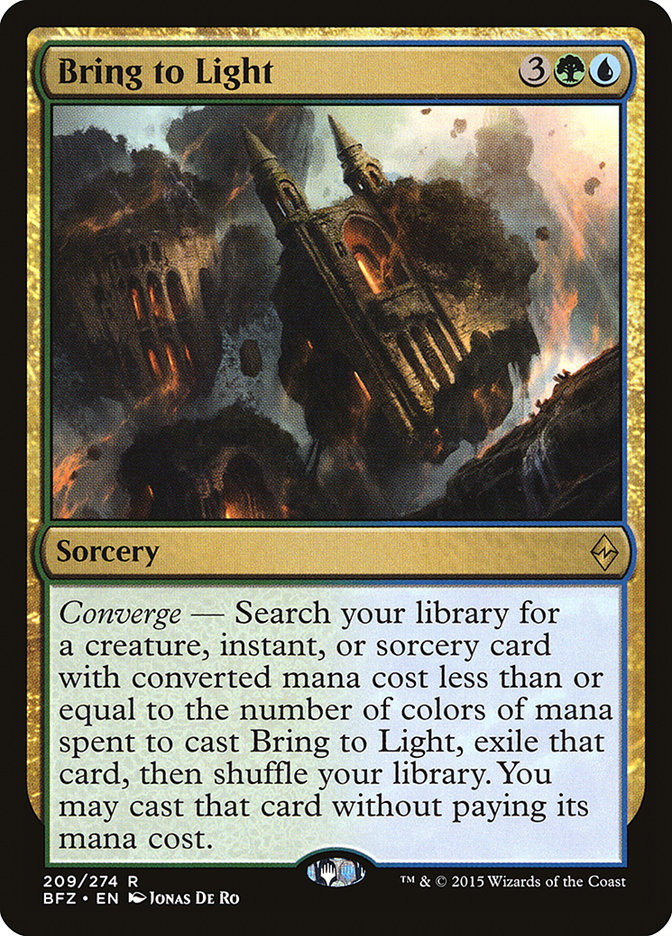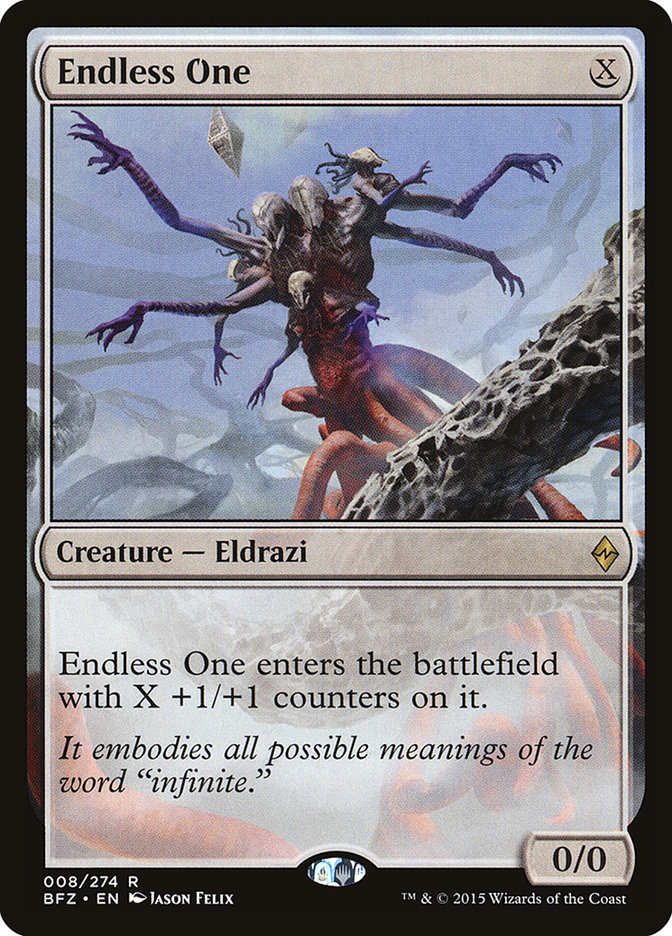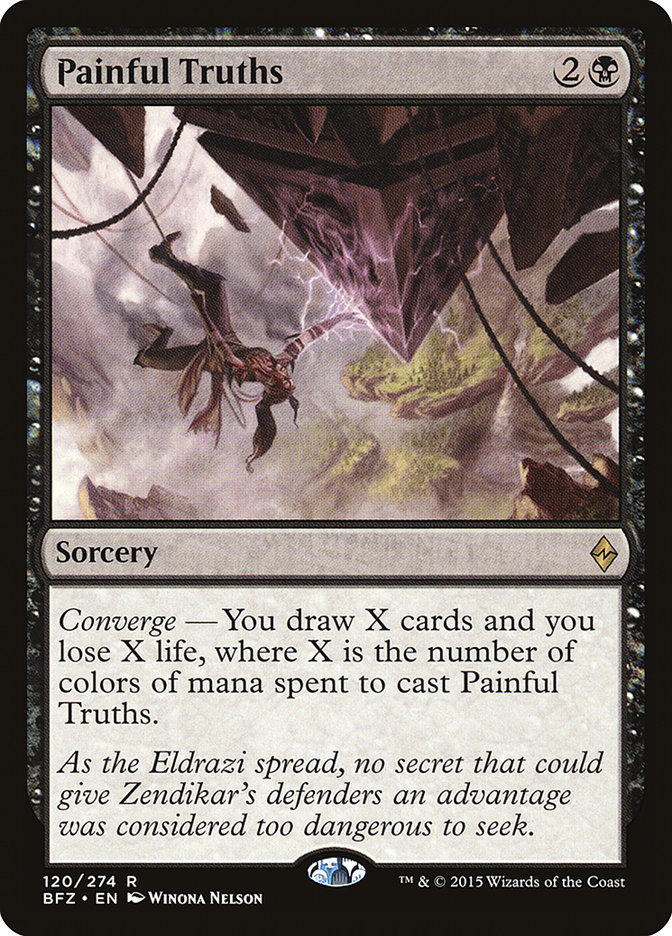It’s been an interesting couple of weeks in the fast-paced world of #mtgfinance. Cards worth hundreds of dollars are suddenly worth even more hundreds of dollars, there’s a panic in the air, and Magic finance made it onto CNBC (!) thanks to a certain real-life supervillain.
I didn’t want this discussion to step on the toes of my set review (Eldritch Moon is awesome!), nor did I want to wait another week before talking about it. Thus, you will get to see the second half of my set review on Wednesday in a special edition of my column.
My goal today is to cut through the nonsense, quell the panic, and have an adult conversation about what’s actually happening. If you want to know what actions you can take if you’re worried about the future of your collection or your favorite format, read on. Any questions?
I’m still kind of confused about what’s going on. Someone is buying out all the Magic cards and Martin Shkreli is involved somehow? Can you summarize the situation in three paragraphs or less?
A couple of weeks ago, a man named Craig Berry spent about $15,000 and bought 41 copies of Moat. He made another five-digit buy last week, this time targeting Reserved List Legacy staple Lion’s Eye Diamond. In both cases, he released videos on YouTube beforehand letting people know what he was about to do. In both cases, the cards immediately spiked.
People began comparing Craig Berry to Martin Shkreli, the pharmaceutical executive whose company became famous for buying out the sole distributor of a drug used to treat toxoplasmosis (a disease often found in AIDS patients) and jacking up the price from $13.50 to $750 per dose. In order to cement his status as Seto Kaiba’s more villainous little brother, Shkreli also spent two million dollars buying the only copy of the Wu-Tang Clan’s latest album that will ever be released (an odd business decision on their part, to be sure) and he has decided to keep it locked away where no one will ever get to hear it.
A few days later, the actual Martin Shkreli showed up on the Magic: The Gathering subreddit (and later on Twitter), presumably because he had a Google Alert on his name and he was feeling jealous that someone else was being called “The Martin Shkreli of Magic.” If you believe him, he is planning on dropping approximately $500k on buying cards, and according to the next Tweet he was “up to 5 Black Lotuses just tonight.” A few hours later, in a statement that somehow manages to show a complete misunderstanding of both Magic and finance, he tweeted, “If you can only play a few Black Lotuses at a time, what is to stop someone from buying a few and then burning/destroying all of the rest?”
So we’re doomed? RIP Magic? We’re looking at million dollar Lotuses and $1,000 Scalding Tarns from here on out?
Not so fast. First off, Shkreli’s goal here probably isn’t cornering the Magic card market—it’s to troll a notoriously thin-skinned community while grabbing some headlines (which he did, on Gawker, CNBC, and several dozen other places). Also, according to Reddit user dottree, Shkreli is good friends with a Magic streamer named Billy the Fridge and they’ve already spent time trolling the community in various ways. He likely knew that inserting himself into this firestorm would create the sort of panic that makes him feel powerful and important. He doesn’t need to buy out every Black Lotus in the world do to that—mission already accomplished.
If you don’t believe me, a quick perusal of his Twitter feed might help convince you. Over the past few days, Shkreli has announced his intention to get Kanye West and Donald Trump into Magic, declared “I am the black community,” shown a picture of a friend holding up a Bone Splinters with the caption “one of the rarest cards in the game,” and announced that he will sue anyone who takes “his” Pokémon on the east side of 42nd Street in NYC. It’s possible that Shkreli isn’t trolling here, but it seems very unlikely.
But even if Shkreli does decide to proceed with his buyout, it’s going to take him a while before his activity actually affects the market. He claims that he’s up to seven copies of Black Lotus and five Moxes, which is a decent Eternal weekend for a mid-sized dealer. There are plenty of Black Lotuses still available here on StarCityGames.com, and their prices are already so high that 99.9% of Magic players aren’t ever going to realistically consider buying one. Even dumping $500k into Lotuses won’t do a whole lot, especially considering he probably doesn’t know how to test for fake power (always buy expensive cards from reputable dealers, folks!) and he’ll end up dropping some of that bankroll on those “too good to be true” deals on eBay.
And then…what? He’ll burn them? Doubtful. Stick them in a vault? Maybe, but I bet they’ll be the first to go when he ends up having to deal with yet another count of securities fraud. Of all the potential outcomes here, “Martin Shkreli ruins the Magic economy by buying too many cards” is the least likely by a wide margin.
Okay, so maybe Shkreli himself might not be a threat, but that doesn’t mean these buyouts aren’t a big problem. Craig Berry was able to spike Moat to $500 and Lion’s Eye Diamond to $200 all by himself. How is this legal?
There are no government regulations governing the buying and selling of Magic cards. If that upsets you, it’s worth looking into how unregulated most financial markets are. For example,
If Shkreli had enough money, he actually could buy every Magic card in the world and burn them in a glorious conflagration. As long as he had the correct burn permit, you couldn’t stop him. If someone thinks they can make money buying every card of Moat in the world, you can’t tell them not to. Capitalism!
So the law isn’t on our side, but what about the ethics of the buyouts? Isn’t what Craig Berry did morally wrong? Furthermore, how is it different from the sort of speculation you encourage in this column each and every week? Isn’t the end result of Magic finance a horrible dystopia where only rich people can afford to play? And aren’t you helping manifest that nightmare reality before our very eyes?
By its nature, capitalism operates on a sliding spectrum of ethics. On one end is pure communism—a society where the government (or some other regulatory body) ensures that all wealth is distributed equally without the potential for individual wealth. On the other side is a world where no markets are regulated and all business owners choose to operate without scruples. This might include slavery and child labor, as it often did during the early days of industrialization.
Most people agree that communism is both hard to pull off without corruption and not very conducive to innovation. Most people also agree that allowing businesses to hire children and work them for eighteen hours a day runs counter to the values we want to have as a society.
Billions of words have been written about where the line should be drawn in between the two extremes. When should the government step in to regulate what banks and corporations are allowed to do? When should it step back and allow the market to decide for itself? This line is drawn and erased and drawn again over and over in our most hotly contested elections and fiercely debated laws. We aren’t solving this debate in a Magic finance column, and I can already hear the salivary glands of every person who disagrees with me as they scan through this column in search of ammunition for their comments section screed.
In the world of high finance, most ethical debates over speculation happen because someone has decided to raise the price on a commodity that is crucial to someone else’s survival. For example, speculation on food and agricultural goods can lead to major shortages and price spikes on things like corn and wheat. According to the UN, food speculation in 2008 negatively affected a hundred million lives, mostly poor people in Africa. And then, of course, there is the Shkreli’s most famous sin, where he rose the price of a life-saving drug by 5,556 percent. “You overpriced a drug that people needed,” someone told him on Twitter yesterday.
“What should the price be,” he replied, in a move that is less snarky and more revealing than he probably realized at the time.
On a spectrum where we are talking about food and life-saving drugs, Magic cards don’t rate. I’m going to spend the rest of this column talking about Magic cards as if they matter, both because I love Magic and because it’s my job, but it’s worth remembering that these debates have consequences in much greater arenas. We are doing the world a disservice if we forget that.
Meanwhile, in Our Little Multiverse…
So. Most Magic speculation is rational and small scale. Individual players see a card that they believe to be mispriced for whatever reason (it sees more play relative to its supply than its current price would indicate, generally) and buy a few extra copies. This may help move the market along, but if you’re buying a high circulation card like, say, Collected Company, it isn’t likely to matter much. The market will react to the continued turmoil of buying and selling, and at some point the price will move. If it goes up, your collection ends up being worth more. If not, it ends up being worth less. This sort of speculation is the bulk of what I talk about here, and it is relatively harmless. Prices would still be rising and falling just as large and fast if these speculators didn’t exist.
Some speculation is irrational and large scale, relying on panic, confusion, and the dollars of fellow speculators. I’ve never seen anyone cast an Altar of Bone in my entire life, but that didn’t stop it from being bought out last weekend by (likely) a single person or group of people hoping that they could capitalize on the Reserved List spike hype.
This sort of thing rarely works well, and the price is already heading back toward pre-buyout levels. Why do they happen? Because all too often the price goes up just enough to make a small profit if you’re quick on the dump. This is especially true if you can buy all the cheapest copies and then convince other rubes to finish the buyout for you.
I don’t think this strategy is particularly ethical, and I neither condone nor encourage it. It is certainly a rational way to act in a free market with no regulation, but so is what Shkreli did when he ran Turing Pharmaceuticals. I like to hold myself to higher standards than mere rationality.
Lastly, some Magic speculation is both rational and large scale. Craig Berry realized that Moat and Lion’s Eye Diamond were underpriced as long as you believe that 1) Legacy will be around for years to come and 2) Wizards of the Coast will keep printing sets like Eternal Masters. It’s not like this is some new revelation—I’ve been talking about it for months, and many of you bought your LEDs and dual lands back when Eternal Masters was first spoiled. It’s also the same thing that happened to all the cards in Modern that weren’t reprinted last summer after Modern Masters was released. The only difference was that lots of people got in on the action last time, while this time around there is a single person who has become “the face of the buyouts.” This means that there is someone we can point to and hold solely accountable for rising prices, whether it is true or not.
Is what Craig did unethical? Moat and Lion’s Eye Diamond were probably underpriced at their pre-spike retail price. If he hadn’t bought them out, they probably would have taken several months (or even several years!) to reach whatever their price will settle at once the hype has died down a bit. He bears some responsibility for the panic his buyout videos caused, and in an interview he did with Corbin Hosler he admits that they might not have been the best idea.
Personally, I still don’t know what to think. My life wasn’t affected very much by the buyouts, though I suspect that there are real people out there whose entry into Legacy will be hurt by them, which bothers me. Even if I had thirty grand to invest in Magic cards, though, I don’t think I would have made the move he did. Is it because I am more ethical than Craig? Or am I simply not a strong enough risk-taker and have decided to shroud myself in the banner of ethics in order to justify my continued inaction? I wish Craig Berry hadn’t made his buy, and I’m also sort of jealous that I didn’t think to do it first. Take that for what you will, I suppose.
Ethical or not, I’m starting to get worried. Legacy prices are getting nuts. I mean, two hundred dollars for a Lion’s Eye Diamond? This is a bubble, right? When is it going to burst?
Some people have compared the Legacy buyouts to famous collectibles bubbles of the 1990s—collector plates, beanie babies, baseball cards, comic books, etc. Are they on to something? Is Moat really going to be the next The Death of Superman?
I’ve written extensively about bubbles before, coming to the conclusion that Magic prices are not in an economic bubble, but I think it’s worth doing a brief recap here in order to see if the recent buyouts have changed anything.
First off, all of those collectibles bubbles were driven by profit dilution and release fatigue. Too many people were printing baseball card sets, flooding the market with “scarce” products that weren’t actually scarce at all. Comic books came out with so many variant covers that collecting them all became impossible. While Magic has slightly increased the number of cards it prints yearly, we’re talking about cards printed twenty years ago—there’s no comparison to the bubbles of the 1990s. Moat and Lion’s Eye Diamond are the real thing.
Second, all of those 1990s bubbles were burst by a crisis of confidence. The Death of Superman is a great example of this. Many people believed that it was far rarer than it actually was, and they ended up paying above retail for their copy (or copies—many decided to hoard dozens of issues.) When these speculators realized that there were roughly infinite copies of the book out there, they panic-sold and the secondary market price went right to zero.
Again, the Reserved List buyouts aren’t going to do this. The Modern and Eternal Masters sets might have triggered a bubble had they been mishandled, but WotC was good about not overloading them with value Chronicles-style. Eliminating the Reserved List might potentially help set this off, but that’s a topic for another day.
Lastly, and perhaps most importantly, those collectibles bubbles burst because most of the people investing in them had no interest in their intrinsic value. Most of the people who ran out and bought The Death of Superman didn’t care about the comic—they just didn’t want to miss out on a collectible that Little Johnny could re-sell in five years at a massive profit. (Ironically, The Death of Superman came out in 1992, so these people were months away from being able to buy booster packs of Alpha and Beta.) When it was revealed that every collector who wanted a copy of this book already had it and the other ten thousand copies were stuck in the hands of profiteers, demand went straight to zero.
Could that happen to Magic? Yes, but it hasn’t happened yet. For one thing, $200+ cards are not conducive to lots of casual speculation. For another, most card prices still appear roughly tethered to real-world demand. In a bubble, prices don’t act rationally. And like it or not, these latest Reserved List buyouts are fairly rational, albeit a little red-flaggy. This point is worth revisiting if we end up in a world where the speculation market has priced out all the actual players and collectors, but that simply isn’t the reality we’re in right now.
Don’t believe me? Think about it like this. Imagine a speculator dumps a hundred copies of Moat onto the market and no speculators are interested in them whatsoever. How low could it get before Legacy players start to snap up copies? How low before Commander players, Cubers, and casual mages who just want to have a Moat in their collection are interested? I doubt it gets below $250 before the price readjusts and the copies are sold.
If hundreds of speculators drive these prices far beyond what players will pay, we’ll be in a bubble. If they start dropping back down to some equilibrium that takes player demand into account, we’re not.
I can’t help but feel like the Reserved List is the real villain here. If there was risk of WotC reprinting Lion’s Eye Diamond, buying a hundred copies at retail would be a silly move. Eliminating the Reserved List would stop the buyouts and keep Legacy from being a gated community for the very rich.
I’ve been against the Reserved List for years, so you don’t have to convince me that removing it would be a good thing. Complaining about it is about as useful as howling at the moon, though—if you haven’t been in the Magic community for very long, you should know that there has been strong anti-Reserved List sentiment for years. Nobody knows the real reason why WotC won’t repeal the thing, but they have stated and continue to state in no uncertain terms that it will not be going away. Fight if you want, yell about it if you must, but there have been so many final nails in the Reserved List coffin that the coffin is basically made of nails at this point. It isn’t going anywhere.
Here’s the other thing about the Reserved List: if it is repealed at this point, the rational thing to do is to sell every RL card you own as fast as you can. There’s no way Lion’s Eye Diamond is $200 and Volcanic Island is $350 if WotC can reprint them, right? Hundreds of Legacy players will sell the backbones of their collections because it’s the smart thing to do, only to be faced with tough decisions about what to re-buy after the dust has settled. WotC obviously won’t reprint all the Reserved List cards right away, nor will they make them easy or cheap to get. Many will be too frustrated to get back in, and many won’t re-buy at all because they’ll have already spent the money on other things. Abolishing the Reserved List might ultimately make the format cheaper and easier to play, but its short term effect might decimate the Legacy player base.
Paradoxically, the Reserved List is one of the only things that makes Legacy a realistic dream for most poorer players. The format would obviously be more accessible if it were thousands of dollars cheaper, but assuming it’s always going to be pricier than Modern (a good bet, I’d imagine) the RL helps ensure that your costly cards won’t tank in value overnight thanks to a single reprint decision. It doesn’t help the people who are never going to have a few grand to drop on a hobby, but it certainly helps those who have the cash but don’t want to risk losing it all. (I wrote about this in greater detail here.)
So yes, I do think that the elimination of the Reserved List would help curb this sort of speculation, but repealing it isn’t likely to happen and it’s a more complex and thorny issue than you probably think. At any rate, let’s move on.
Is there anything we can do to discourage speculators like this from wreaking havoc in the future?
Yes indeed!
First of all, there aren’t likely to be many more buyouts like this for a long time. There are only a handful of cards that are both on the Reserved List and which see significant play in Legacy and Vintage, most of which spiked last week. The blue dual lands might jump, but it would take someone with a large bankroll to make it happen. In Craig’s interview, he said that most of the targets he thought about choosing had already been hit. At this point, we’ve moved beyond the top tier (City of Traitors, Gaea’s Cradle) and into the second and third tier options like Intuition, which only sees play as a two-of in a single deck and whose value has been declining for months.
Second, stop panic-buying cards after a spike happens. Buyouts only work because someone is willing to pay more money for the card on the other side, allowing the speculator to cash out at a profit. Remember: when you’re buying cards at retail and hoping to flip them, the price has to go up so much that you can either buylist them for more than they paid or get out at a profit after taxes, fees, shipping, and handling time are factored in. If the price doesn’t see a major surge, it’s a great way to light your money on fire. If people are calm and able to wait the spike out, fewer people will be incentivized to try it in the future.
You can also take advantage of these spikes yourself if you have any of the cards kicking around yourselves. Selling into hype is a great way to dump water on the idea of a major price surge while potentially getting out of a card at its peak. Even when dealing with Reserved List cards, selling into hype is usually the right move.
Lastly, you can help prevents spikes even if you don’t have any money to spend or cards to sell. Don’t take to social media and say things like, “Welp, Moat is $600 now…” or “If you don’t have a set of LEDs you’d better buy them now!” These statements trickle back to other players and help set the narrative of the situation in the speculator’s favor. Instead, you can help drive a different narrative, one where someone decided to be silly and spend $5 on a thousand copies of a card that is still worth exactly $5.
This won’t always work, and I’m not asking you to deny reality, but like most things in life, the team with the more compelling story tends to win out. Let’s try to make it the one where prices are determined by player demand and not a guy with a lot of dough.
None of these tactics will stop the rational buyouts, where a card was simply underpriced due to player demand and a single person figured it out before the market did. But they should help keep the spikes from getting too high and help discourage irrational, Altar of Bone-type activity. It’s not perfect, but it’s something.
Okay, I get it, but the whole thing is still really upsetting to me. How can Legacy hope to survive if the prices are so high? Won’t speculation like this ultimately ruin Magic?
First off, the impact of the Reserved List buyouts have been greatly exaggerated. English Moats were $350 before the buyout, and StarCityGamescom still has six Near Mint Italian copies in stock for $350 and one MP English copy for $400. All of the cards that spiked have been coming back down, and most will settle somewhere closer to their pre-spike price than their post-spike high. I’m not saying these cards didn’t go up in value at all, but there has been more smoke than fire.
Second, the impact of these buyouts on Legacy is fairly low. Many of the cards in the format have been dropping in price over the past twelve to 24 months regardless, and Eternal Masters helped make many of the format’s most important staples a lot more affordable.
Even without factoring this in, Legacy is just a darned expensive format no matter how you look at it. A card jumping from $90 to $200 is unfathomable for the Standard mages reading about all of this, but it’s really only about a 5%-10% increase in the price of a Tier 1 Legacy deck. That’s significant, but it’s also akin to the difference between buying your cards from a state with sales tax and one without. The people who could afford to build a paper Legacy deck from scratch can still afford to build a paper Legacy deck from scratch. The majority of people can’t do so regardless.
The harsh reality is that there are only three ways into paper Legacy:
1) Be rich enough to have several thousand dollars’ worth of disposable income.
2) Be someone who started playing Magic back in the 90s and kept all of their cards.
3) Have a lot of self-discipline, a solid long-term plan, passion, and dedication.
I would bet that the vast majority of the people who play Legacy right now are in the first two groups, and these buyouts don’t affect them at all. It hurts everyone in group three who hasn’t gotten around to the Reserved List cards yet, which is why I’ve always recommended starting there. This is unfortunate, and I wish that it didn’t happen, but it’s not going to kill Legacy.
Look, I understand the desire to have Magic be a free-to-play card game where card availability wasn’t an issue. If I could snap my fingers and make that happen without losing the revenue needed to keep the excellent Creative and R&D teams, I would. But the secondary market (and anticipation of future value) drives prices, which drive pack sales, which keeps people employed, which keeps the game good. The result is a capitalist power structure where richer people have access to formats that poorer people do not. Is this unfortunate? Yes. Is it a necessary evil? Probably. You can blame the speculators if you’d like, but they’re a rational result of a system that is needed to keep the game running.
I can’t believe I read that whole article and didn’t just skip right to the bottom! But, uh, can you give me the bottom line just in case?
Martin Shkreli is probably just trolling the Magic community. His actions aren’t likely to affect the market all that much even if he does do anything.
Most casual speculation doesn’t affect the market very much, and it’s still a good way to increase the value of your collection as long as you’re smart about it. Some people will attempt to push this envelope in ethically questionable ways, but there isn’t much we can do about it other than try to do the right thing ourselves.
Magic finance isn’t in a bubble, but we need to be careful about cards whose value has become detached from real-world player demand.
The Reserved List buyouts aren’t going to kill Legacy. Nearly 800 players battled at #SCGWOR this past weekend. Most of the buyouts have probably happened already, and card prices will come back down (but not to the level where they started). Selling your copies of these cards into hype is fine. If you need to buy any of these cards, wait a couple of months if you can.
The Reserved List isn’t going anywhere, and eliminating it might even be counterproductive. You can plan no-Reserved-List Legacy on MTGO right now, where card prices are far cheaper than in paper.
The best thing you can do is to stay calm, avoid getting caught up in narratives that benefit people who like to buy out hundreds of cards at a time, and keep on playing Magic.
This Week’s Trends
I think it’s finally time to buy Jace, Vryn’s Prodigy if you want a set for Modern. The price charts appear to have finally leveled off, and its MTGO price has actually started to tick up again. If current retail is still too steep for you, he might end up dropping again at rotation and/or show up in a StarCityGames.com sale at some point in August or early September.
Its current downward trend appears to have stopped, though, and if Jace ends up seeing more play in Standard after Eldritch Moon arrives, this week might be the absolute bottom of the market.
In Standard, all the Shadows over Innistrad Zombies are up this week—Relentless Dead, Prized Amalgam, and Diregraf Colossus. I’m still not seeing a top tier Zombies deck, but you want these now if you’re a believer. If not, selling your extra copies into the hype is fine. Selling is the safe play; buying is the risky one with a decent amount of upside. Play it according to your own preferred risk profile.
A few other cards have started to perk up out of the Standard slumber. Among them:
1) Demonic Pact, thanks to its perceived utility with Harmless Offering. I’m still not sold that this is anything more than wishful thinking.
2) Matter Reshaper, thanks to its combo with the emerge Eldrazi. I really like this creature, and I’d grab a set now if I wanted to play that deck.
3) Rattlechains, because of how good Spell Queller is. Considering that Rattlechains was already seeing some Standard play, I like this buy quite a bit. I’d also grab a set of Bygone Bishop, which hasn’t spiked yet but which might be the next card to do so.
4) Mindwrack Demon, thanks to delirium hype. Again, this is a solid card with some real room to grow. If Grim Flayer has a chance of fulfilling any of its potential, you’ll need a set of these as well.
Legacy is a bit of a hot mess right now. Here’s a cheat sheet for you:
Spiked Reserved List cards that see play in Legacy:
· Gaea’s Cradle
· Lion’s Eye Diamond
· Moat
Spiked Reserved List cards that see at a little play in Legacy:
· Humility
· Serra’s Sanctum
Spiked Reserved List cards that don’t see any play:
As we discussed above, you can sell any of the cards on these lists into the hype if you want. The cards on the second list and third list should have a harder time maintaining their new value, while the first list should find a new equilibrium somewhere in between the old price and the new one. At any rate, buying at the new, spiked price is a very bad idea and you shouldn’t do it unless you really don’t like having money.
Comments From Last Week
Could Eternal Scourge be a card in a Legacy Food Chain list? It starts your chain a turn faster than Misthollow Griffin but doesn’t pitch to Force of Will.
-Mayk Senden
Most of the Food Chain players I’ve talked to about this would rather just keep using Misthollow Griffin and Manipulate Fate as Misthollow Griffins five through eight. As you said, Misthollow pitches to Force of Will which is a big game. I’m also on the side of Misthollow Griffin seeing more play because it keeps the name of my fantasy football team, Misthollow Griffin III, relevant.
It’s possible that the quicker turn will make Eternal Scourge a better option at some point. It’s also possible that this opens up a Food Chain line of attack that doesn’t involve blue at all—Eldrazi Stompy with a Food Chain backup plan, maybe. You can grab foils if you’re a believer, but I’d rather invest in card Food Chain itself. It’s not on the Reserved List, but it has only been printed once and it’s a tough one to bring back.
I feel Tree of Perdition is going to be a Commander staple in many black decks a la Sorin Markov.
-John David Millsip
I agree! If Tree of Perdition makes it down to bulk rage, it’ll be a nice long-term causal buy.
Magister Sphinx is still just a $1 card, so it’s not like it’s likely to go crazy in price, but Tree of Perdition is much cooler and has a wider range of applications. Imagine dropping this in Doran, switching life totals, and swinging for 40…
Thalia is way better than Vryn Wingmare in Legacy. You basically double Time Walk your opponents on their fetchlands, and she gives you a chance to Wasteland them.
-Orry Suen
Vryn Wingmare was probably not the best comparison, and I agree with you that Thalia is the far better card in Legacy. I’m still skeptical that a three mana creature will become a format staple in Eternal play, but Thalia should at least be a solid sideboard card in Death and Taxes with a shot at the maindeck. Like most new cards, though, her price will live and die on her Standard and (to a lesser degree) Modern playability.
Deals of the Week
I’ve got three cards for you this week, and they’re all on sale for way under a buck: Bring to Light, Endless One, and Painful Truths.
All three of these cards see play in Modern, and they’re the sort of low end staples I recommend picking up at or near set rotation thanks to their long-term potential. Occasionally, it can be better to pick up cards like this a little earlier in case they see a little more Standard play before they rotate or in case a little hype starts to build closer to rotation. Supply is high right now, and you can take advantage of that if you’re willing to be patient. I’ll be grabbing a set of each.


